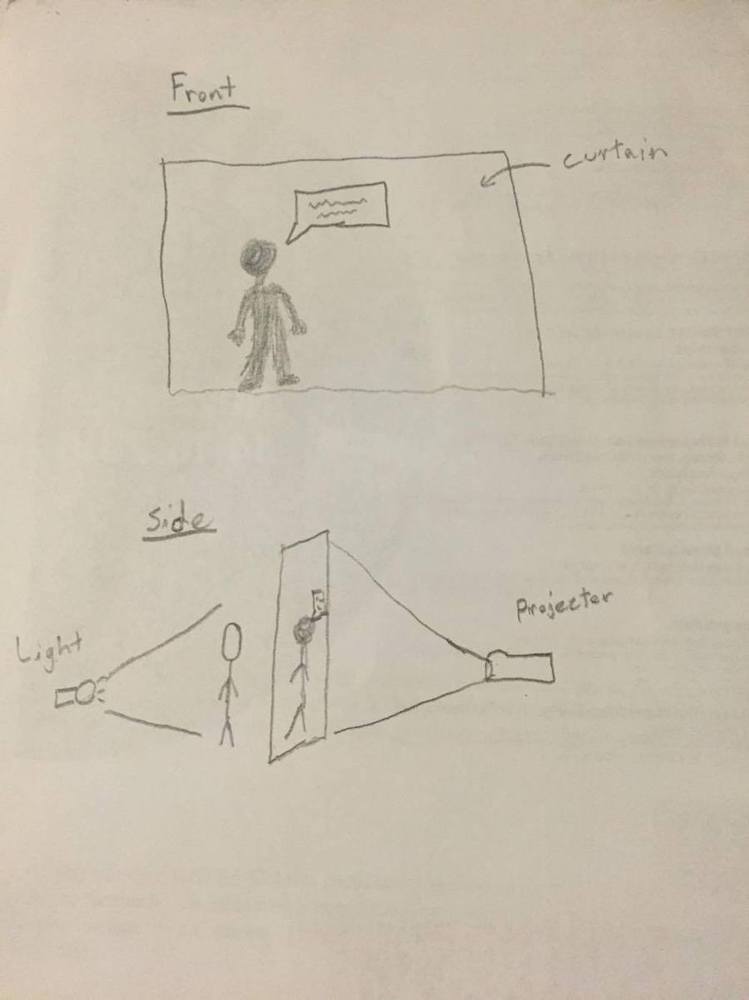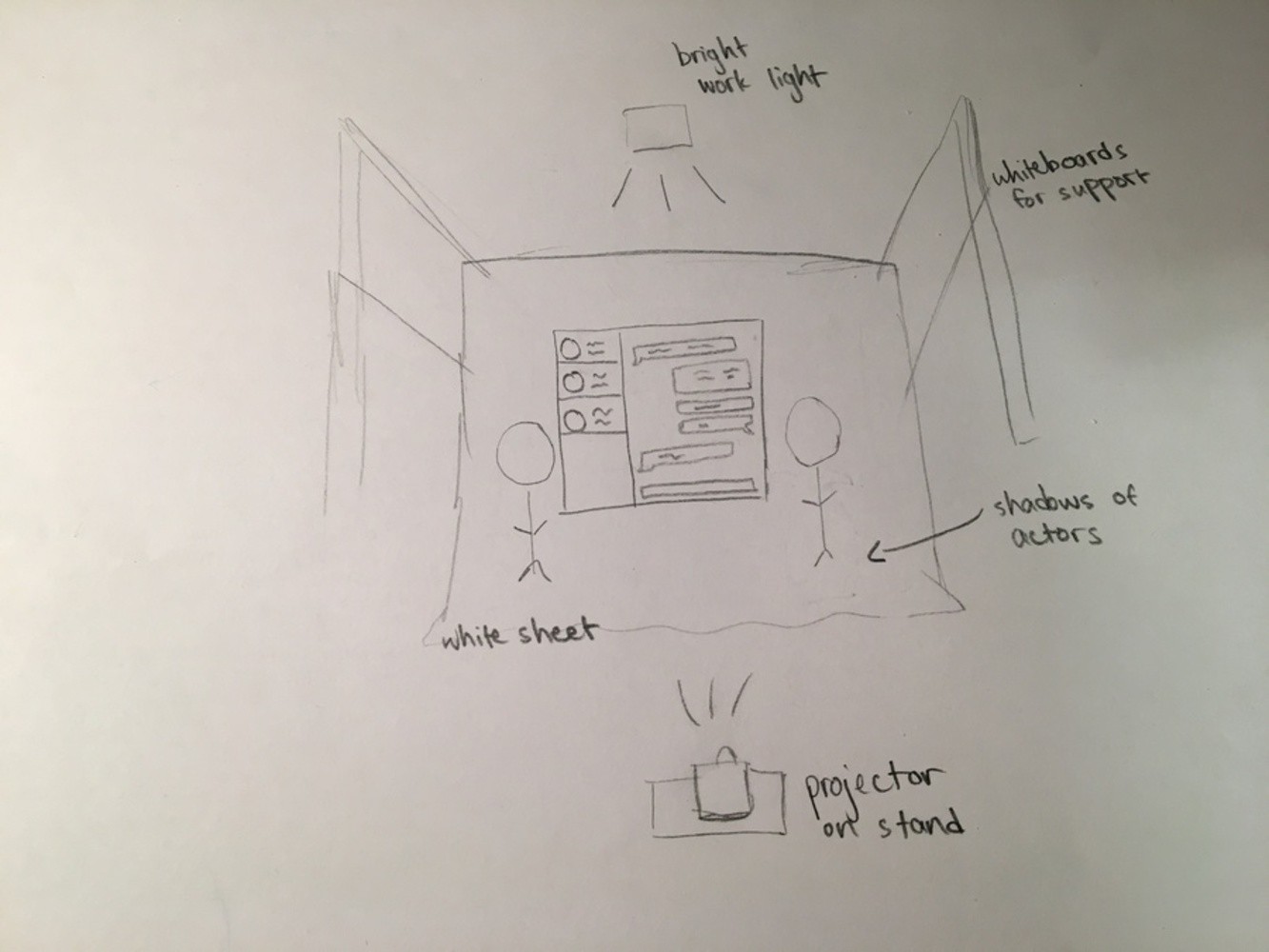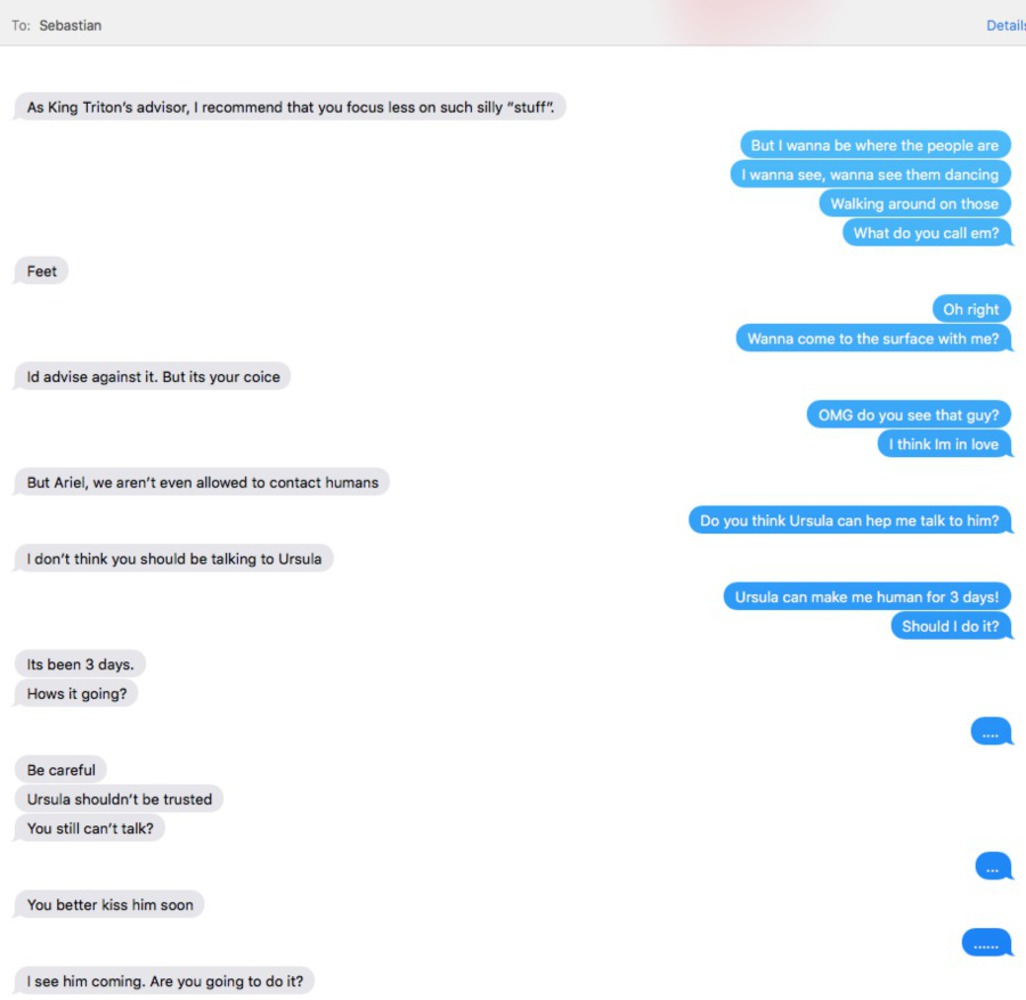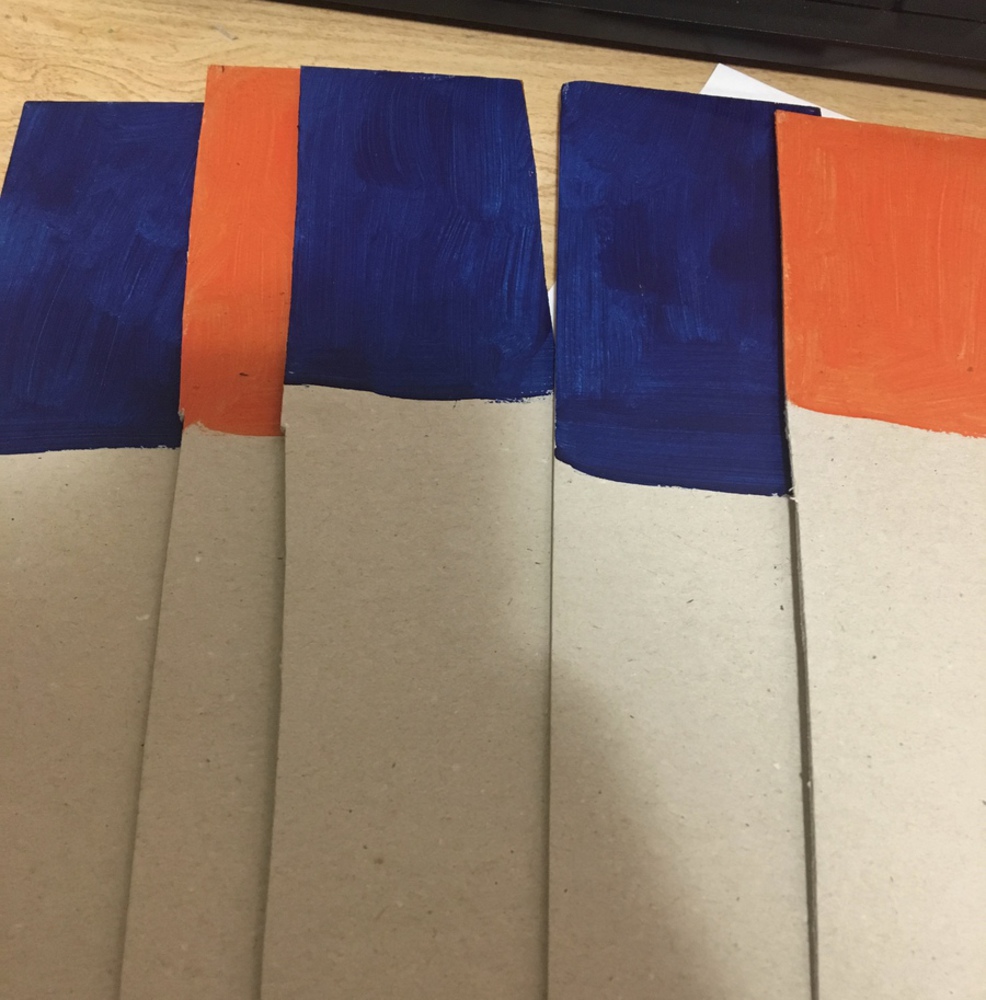Statement
Our performance aims to present a “silhouette performance”, simulating a sort of shadow puppet show, but using media to help carry out the context and plot. We will project text (shown by a traditional iMessage conversation) against one side of a white sheet. On the other side, we will have 2 “actors” whose silhouettes will be cast against the sheet by a bright light behind them. We chose this method of performance to sort of emulate the nostalgia of a shadow puppet show, and we also wanted to explore how media and technology - in particular, a more modern medium of interaction over technology - could play a role in a traditional story.
We chose The Little Mermaid to be the story we present, but we also added a twist to it. In order to add unpredictability and audience participation, we are going to encourage a choose-your-own-adventure type plot. We will have different breakpoints in the story where the audience can choose what route to follow, which will then change the resulting actions and final ending that we perform.
A sketch of the idea is shown below.




